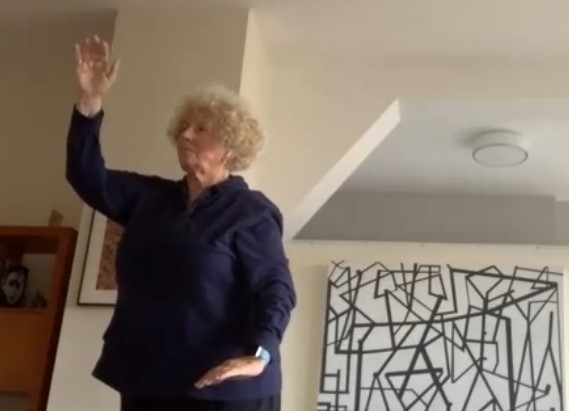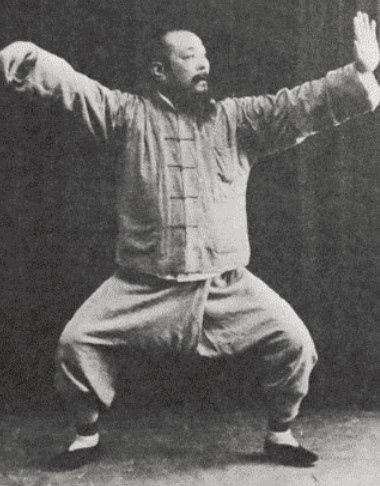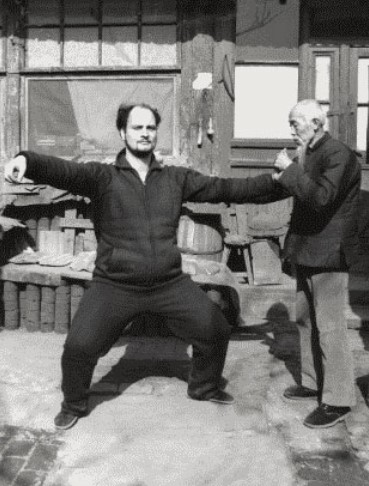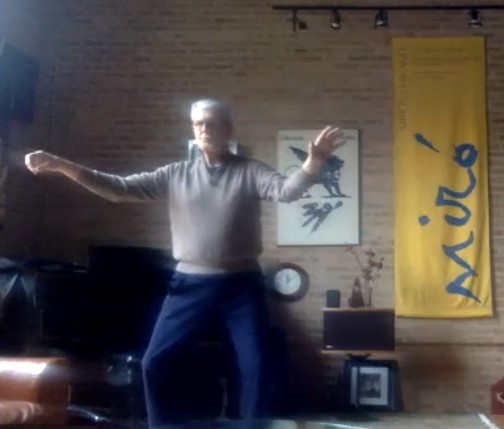Growing Older, Moving Better
with Tai Chi
I want to share a recent Tai Chi teaching experience that moved me deeply, evoking strong feelings of delight, inspiration, and gratitude.
End of Winter Session Long Form 1 Class
It happened during the last Long Form Level 1 class of our Winter Session.
As I like to do at the end of a term, I asked students to do the Tai Chi sequences they've learned over the past months.
I planned to observe, offer comments on their progress, and suggest a refinement or two. Something they could explore during the break between sessions.
Two Senior Students— Svetlana and Bob
Two of the students in the class, Svetlana and Bob, are well into their 70's. Both started several years ago in my Beginning Tai Chi Class.
I remember well my early observations of their movements.
Stiff. Tentative gait. Shaky balance. Slightly stooped posture. Tight shoulders. Tight hips and lower backs.
Both had sustained serious injuries from falls. Those injuries, combined with decades of wear and tear, plus the loss of muscle strength that can occur with age, had reduced their mobility, stability, and ability to move.
I see some combination of these and other conditions in most adults when they start Tai Chi.
It what happens to most human bodies after enough years on this planet.

Svetlana in Wu Style "White Crane Spreads Wings"
Starting with the Short Form
Both Bob and Svetlana kept coming to class, exploring the first Tai Chi form I teach, the 27 Move Wu Style Short Form. They also learned some Qigong (gentle movements designed to exercise the body and improve circulation of internal energy or "Qi.")
My main teacher, Master Bruce Frantzis, developed the 27 Move Wu Style Short Form with selected movements from the Wu Style Long Form.
The Short Form takes about 5 minutes to perform. Most people learn the basics of the full sequence in a few months. So it provides an excellent practice for those new to Tai Chi.
Beginning to Experience the Benefits of Tai Chi
Both Svetlana and Bob, through consistent Tai Chi practice, began to experience some of the powerful benefits of Tai Chi. I could see it in how their movements changed.
Their leg and hip strength improved. Their balance improved. Their postures improved. Each reported aches and pains had disappeared. Their movements were less stiff and more smooth.
And, importantly, both enjoyed Tai Chi, finding it challenging and fun.
Stepping Up to the Wu Style Long Form
After several years of Short Form practice, they each asked to join my Long Form classes.
I told them, "Learning the Long Form is a long-term project. It's challenging. On many levels. If you're up for that, you're welcome to join the class."
And they did.
Background: The Wu Style Long Form
The Wu Style Long Form is a challenging, sophisticated sequence of Tai Chi movements. It includes kicks, spins, lots of rotation, intricate footwork, and a range of striking, blocking, and throwing techniques. All practiced with smooth, circular, connected whole body movement characteristic of Tai Chi.
As exercise, the Long Form delivers a complete workout. It takes about 22 minutes to perform the entire Form at a medium pace. The Long Form trains muscular strength and stamina, especially in the legs and hips. It trains all the systems in the body that contribute to balance and stability. It provides a good aerobic workout. It gently works all the joints.
Plus, especially important as we age, the Long Form trains the nervous system, developing the ability to program an extended sequence of sophisticated movements, with increasing smoothness and connection.
The Long Form I teach comes through Master Bruce Frantzis. He learned it from his main teacher in Beijing, Taoist Master Liu Hung Chieh. Liu Hung Chieh learned it from the founder of the Wu Style, Wu Chien Chuan. That's about as direct from the source as you can get these days. It's the real deal.

Wu Chien Chaun, founder of Wu Style Tai Chi

Bruce Frantzis and Master Liu Hung Chieh in Beijing.

Some adjustments from Master Frantzis during instructor training in Ibiza.
What Happened in Class
Fast-forward to the last Long Form 1 class of our Winter Session.
I asked the class to perform the first section of the Form twice.
As I observed Svetlana and Bob move through the sequence, I was struck by the quality of their movements.
Their Tai Chi was good!
By that I mean several things.
First, their fundamentals were solid— posture, alignments, weight shifts, hip rotations, connecting the arms to the spine, powering and controlling the arms with the legs and hips.
Their movements incorporated these fundamentals to a greater degree than I'd ever seen in them.
But there's more.
They each moved with greater measures of smoothness, stability, power, and grace than ever before.
As they moved, I observed how suppleness had replaced stiffness of a few years ago.
As I watched this, I thought "These people are well into their 8th decade. This is not how people that age typically move."

Bob in Wu Style "Single Whip"
Take It From a Professional Observer of Movement
Just so you get my perspective.
I'm a highly trained, full-time Tai Chi and Qigong instructor. I'm a certified Exercise Physiologist. I have a Masters in Kinesiology. I've worked in a Biomechanics Lab doing clinical gait analysis. My research has been published in Clinical Biomechanics and the Journal of Orthopaedic Research.
In short, I teach, and observe, human movement for a living. That includes observing adults aged 30 through 90. Thousands of hours each year.
In Svetlana's and Bob's cases, I have observed their movements as they have progressed through their 70's.
Here's my assessment in both cases—
With the Big 8-0 on the horizon, Svetlana's and Bob's bodies are more mobile and functioning better than when they were in their early 70s.
Their movements have become more smooth, connected, powerful, and graceful. Their legs and hips continue to get stronger. Their balance continues to improve. The range of motion in their shoulders, hips, and many other joints has increased. Their nervous systems have developed to program extended sequences of Tai Chi movements.
And they are having fun, making friends, and enriching their lives through Tai Chi.
What Svetlana and Bob Say About Tai Chi
In talking with Svetlana and Bob, it's clear they feel in their bodies the dramatic changes I observed from the outside.
Bob says, "I've experienced profound improvement in leg strength and coordination. My posture has improved. My entire body is more centered."
Svetlana remarks, "Tai Chi has helped me in every way as I get older. Physically and mentally I have more energy. I feel more stable and my balance is much better. My fear of falling again has gone away."
A Vietnam combat veteran, Bod adds, "I enjoy the challenge. Plus I feel a bit of grace in my movements. That's a new feeling."
Svetlana's experience has made her an advocate for Tai Chi. "I encourage adults of all ages to learn Tai Chi. It's wonderful exercise. It doesn't pound or strain the body. And it's so enjoyable."
Inspiring Examples
Svetlana and Bob provide inspiring examples of healthy aging.
Of making the choice to begin a new and challenging movement practice.
Then sticking with it.
Continuing to learn increasingly sophisticated movements. Challenging their bodies and minds. And having fun while they're at it.
Along the way, their bodies have changed. They've become stronger, more relaxed, their movements more smooth and graceful.
When I'm heading toward the Big 8-0 (far from a certainty I recognize), I want to be like Svetlana and Bob, growing older and moving better with Tai Chi.
In closing, I send much gratitude to Svetlana and Bob for being wonderful students, friends, and inspiring examples to the Chicago Tai Chi Community.
Thank you!

Chris Cinnamon, JD, MS
Certified Exercise Physiologist
Head Instructor
Author, Tai Chi for Knee Health
P.S.
Interested in moving with smoothness, power, and grace? Even as you age?
Live outside Chicago? No problem!
You can join our Online Classes from virtually anywhere.
For more info, click here.